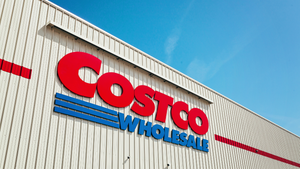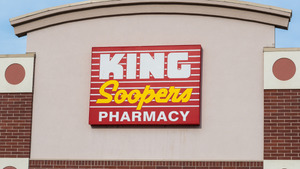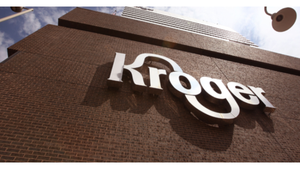Retailer confidence is up. Here’s why.Retailer confidence is up. Here’s why.
Fresh categories and prepared foods are stoking optimism, according to the results of our 2025 Retailer Expectations Survey
February 4, 2025

The economic outlook for the year ahead has continued to improve among retailers and wholesalers, according to the latest Supermarket News Retailer Expectations Survey.
A significant majority of retailers and wholesalers surveyed (about 82%) said they were at least “fairly confident” about the economy heading into 2025, including 26% who said they were “extremely confident.” That’s a significant jump from a year ago, when only about half (52%) of retailers and wholesalers were at least somewhat confident in the economic outlook for 2024.
In fact, heading into 2024, respondents were overwhelmingly concerned that the economy was heading into a recession. The recession never actually happened in 2024, however, and economic growth remained robust overall.

This year only 17% of total survey respondents said they expected a recession in 2025. Retailers and wholesalers were a little more pessimistic on this topic than survey respondents overall, with 31% predicting a 2025 recession.
Although many observers continue to expect an economic slowdown in 2025, this year’s SN Retailer Expectations Survey marks the second year in a row in which the outlook for the economy has improved year-to-year, after three years of declining confidence.
That confidence is also reflected in retailers’ outlook for sales growth. Fifty-seven percent of retailers and wholesalers said they predict that their sales will grow in the first six months of 2025, including 21% who predicted sales growth of at least 5%. Another quarter of retailer respondents predicted flat sales growth in the first six months of 2025, while 18% predicted that sales would decrease in the near term.

Inflation remains a concern
Although inflation was relatively flat across many grocery categories throughout 2024, it remains a significant worry in the year ahead. Almost all retailers and wholesalers in the survey (93%) agreed that inflation is a concern in 2025, up six percentage points from the 87% who thought inflation was a concern heading into 2024.
“Our biggest concern is what the new administration may do in the form of tariffs, creating artificial inflationary pressures,” said one retailer.
President Trump has proposed extensive tariffs on imported goods in order to make American-made products more competitive, but some observers predict that such tariffs could drive up costs for companies that rely heavily on imported foods, ingredients, and other products. These companies include food retailers, many of which import produce from Mexico and other areas of Latin America, for example.

A wholesaler was likewise keeping a wary eye on the potential impact of President Trump’s policies, saying they were “concerned about the impact of tariffs and mass deportations on input cost inflation.”
A sales agency also expressed concerns that tariffs could increase the costs of goods.
“If inflation flattens out, or if Trump does not implement the tariffs he is promising, then I hope prices don’t increase very much,” the sales agency said in the report. “Until Trump takes office it is difficult to project how much prices will increase.”
Another retailer said their primary focus in 2025 would be to keep prices low to better compete with Walmart.
“Everything else is in support of this goal,” the retailer said.
Asked about plans for their pricing strategies on a category-by-category basis, however, retailers predicted they would either raise prices or keep them same across almost all categories. Only about 20% to 30% of retailers in each major category said they planned to discount prices in the year ahead.
Interestingly, more retailers — 50% — said they planned to expand their fresh offerings in 2025 than said they planned to adjust their pricing or discount strategy. Closely related to that second option, however, 36% said they planned to adjust their private label strategy in 2025, following a boom year for store-brand products.
Other popular merchandising strategies included expanding the center store selection (25%) and expanding health and wellness categories (18%).

Labor and other concerns
Some retailers cited labor issues as a key challenge in 2025. Retailer responses to a query about the biggest challenges to their business in the year ahead included:
• “Reducing costs within the constraints of a union workforce.”
• “Labor shortages because of inflation.”
• “Labor expenses are too high given the union work force.”
Similarly, sales agencies that responded to the survey also cited labor concerns, with one noting that maintaining a staff of good workers would be the company’s biggest challenge in the year ahead.

“In the food retail industry, rising product prices and rising labor costs will be the biggest issues,” said another sales agency representative.
“California labor costs are unrealistic,” said yet another.
Other challenges cited by retailers included competition from dollar stores and low-price specialists such as Aldi and Lidl, which one retailer said were siphoning off older consumers in particular from the retailer’s customer base.
Asked about their biggest competitive threats in 2025, Walmart topped the list, however. About three-fourths of retailers and wholesalers (76%) said they viewed the Bentonville, Ark.-based behemoth as they biggest competitive threat, followed by warehouse clubs at 40%.

Expansion plans
Retailers were slightly less optimistic about their expansion plans in 2025 than they were a year ago, as only 29% said they planned to grow their store count. That compared with 45% who said they planned to add more stores in 2024.
Many retailers in the survey expected to remain in hiring mode in 2025, however. More than half of retailers (54%) said they planned to increase hiring in the year ahead, including 13% who said they planned to increase hiring by more than 20%. Most retailers (60%) said they planned to increase hiring by between 1% and 5%.
Those figures all represent significant increases from a year ago, when only 33% of retailers and wholesalers said they planned to increase hiring in 2024.
Retailers and wholesalers were also optimistic about the ongoing growth of their online grocery sales, as 29% of those respondents said they expected online sales to comprise more than 10% of their total sales in 2025. That compares with 17% who said online represented more than 10% of their total sales in 2024.

Optimism for prepared foods
The deli/prepared foods area of the store remains a significant source of optimism for retailers and wholesalers, with 77% citing it as a category they expect to have the most success with in 2025.
In addition, 55% of retailers said they planned to increase their prepared foods offerings in the coming year, and 55% said they planned to implement changes in their prepared foods lineup, such as adding more grab-and-go products.
Among the plans retailers cited for their prepared foods departments were:
• “Offer more healthy options, including gluten-free, keto, and reduced sugar and salt.”
• Grab and go and in-store pre-packaged deli — “People do not want to wait.”
• “Making it easy for the lifestyles of all our customers to handle.”
Other departments where retailers said they anticipated success in 2025 included fresh meat (cited by 62% of retailers) and fresh produce (54%). About a third of retailers (35%) each cited fresh bakery, center store grocery, and dairy as departments they expected to deliver results in 2025.
Rounding out the bottom of the list: non-alcoholic beverages, health and wellness/HBC, general merchandise, and the frozen aisle, which was cited by only 8% of retailers as a category destinated for success in the year ahead.
Retailers said the categories they expected to be the most challenging were center store grocery (42%), health and wellness/HBC (38%), and general merchandise (35%).

Digital marketing a key priority
Retailers and wholesalers overwhelmingly cited increasing digital marketing, including loyalty initiatives, as their top priority for building sales in 2025, with 68% of retailers citing this strategy. In-store promotions followed, cited by 57% of retailers and wholesalers.
In the comments section of the survey, one retailer said they expected to refine their marketing strategies in order to drive sales. Their plans include increasing targeted marketing of coupons and sales promotions to older consumers. Targeted marketing to reach Gen Z and millennials will be much less widespread as those consumers have accumulated too much debt and will have limited spending ability, the retailer said.
Another retailer, meanwhile, said they would focus more on providing products to attract Gen Z consumers, and at the same time offering products that promote a healthy lifestyle for senior consumers.

Another retail said they would focus on reducing shrink in 2025, and yet another said they planned to stick to their tried-and-true merchandising strategies, which include “fair prices, fresh meat and produce, and a blend of natural, organic and conventional products.”
One wholesaler said they planned to leverage product innovation to drive sales growth in 2025, including the launch better-for-you snack products.
In fact, 58% of retailers and wholesalers said they planned to bolster their health and wellness positioning in 2025. Their top strategies include adding new products, which was cited by 57% of retailers and wholesalers, and growing or updating their assortment, which was cited by 43% of those respondents.
About the Author
You May Also Like






